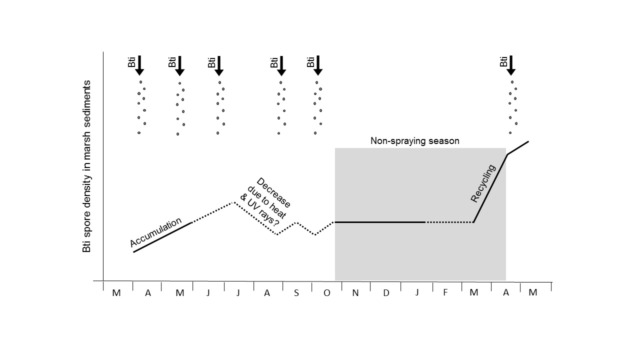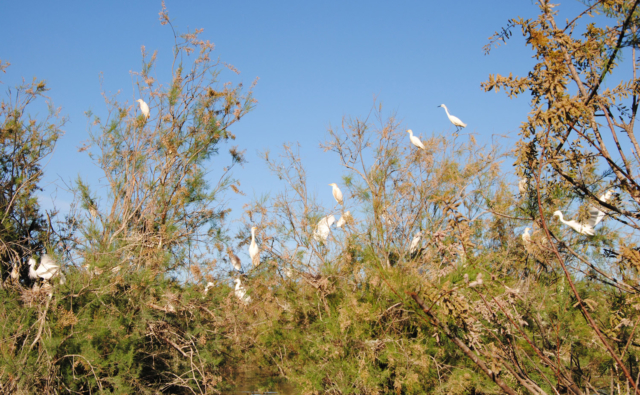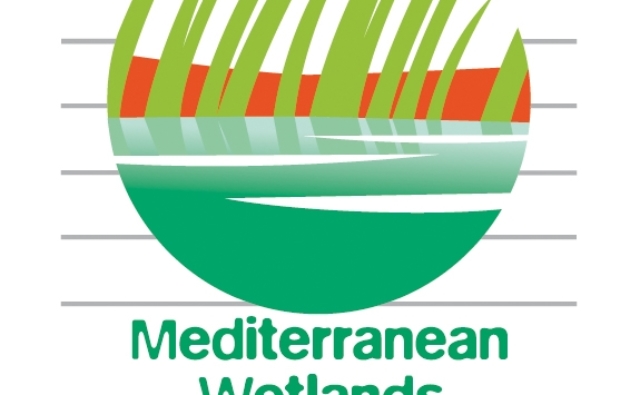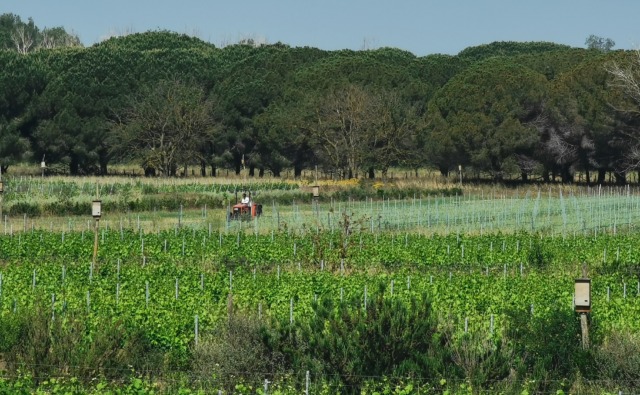This article was published in the journal Ecotoxicology and Environmental Safety.
It deals with the environmental impacts of Bti (Bacillus thuringiensis israelensis) bacteria used to control mosquito in the Camargue and around the world!
This work results from a collaboration with the Grenoble University, which conducted microbiological analyses on surface samples of sediments collected in the Camargue between 2012 and 2017 in various treated, previously treated and untreated marshes.
Bti was present in all environments, but at concentrations 22 to 500 times higher in the mosquito-control sites compared to the control sites. Not only can Bti persist for several years after spraying, but its density increases significantly in the spring before the first treatments of the year. Since Bti is a pathogen that requires a host to multiply, the researchers believe that this proliferation is due to the ingestion of Bti by chironomids which, unlike mosquitoes, feed on the surface of the sediments where Bti accumulates and retains its toxicity. This hypothesis is supported by the strong reduction of chironomids in the adult stage observed at various sites in the Camargue. In other words, even if the treatments target the periods of mosquito emergence, it is the much more numerous and diverse chironomids that are likely to be the most affected, hence the impacts highlighted in previous work on the food chain (significant decrease in odonates, swallows, paludicolous passerines, etc.).

You can access to it on the Tour du Valat web documentary portal.
Abstract:
Bacillus thuringiensis subsp. israelensis (Bti) is the main larvicide used to control mosquitoes worldwide. Although there is accumulating evidence of Bti having environmental effects on non-target fauna, relatively few field studies have documented the fate of Bti spores in the environment. Spore density was quantified over a 6-yr period (2012–2017) in Mediterranean marshes sprayed with Vectobac 12AS (32 ITU/ha) since 2006 to reduce the nuisance caused by Aedes caspius. Bti spores were naturally found in all habitat types. Spore density expressed as colony-forming units per gram of soil (CFU g−1) increased significantly at treated sites by a factor of 22 to 500 times relative to control sites, with mean values of 7730 CFU g−1 in halophilous scrubs, 38,000 in reed beds, 49,000 in bulrush beds and 50 000 in rush beds. Spore density varied little in the first months after the spraying season (April-October), but increased sharply in spring, just before the annual launch of mosquito control. Considering that Bti is an insect pathogen that cannot proliferate without a suitable insect host, this unexpected recrudescence in spring could be related to the warming of water that triggers activity and development of benthic organisms such as chironomids, which may contribute to Bti proliferation by ingesting accumulated spores at the surface of sediments. While spore density tends to decrease over time, presumably during the summer period as a result of increased UV exposure, three to four years were necessary for spore density to return to normal levels after mosquito-control interruption. This study is important because it demonstrates that environmental effects of mosquito-control using Bti can far exceed the short period of Bti efficacy against lentic mosquitoes. Considering that Bti is a microbial agent, these long-term effects should be addressed at multiple levels of ecosystem organization from a one-health perspective.
Bibliographical reference:
B. Poulin, G. Lefebvre, S. Hilaire and L. Després Long-term persistence and recycling of Bacillus thuringiensis israelensis spores in wetlands sprayed for mosquito control. Ecotoxicology and Environmental Safety. Volume 243, 2022, https://doi.org/10.1016/j.ecoenv.2022.114004.



